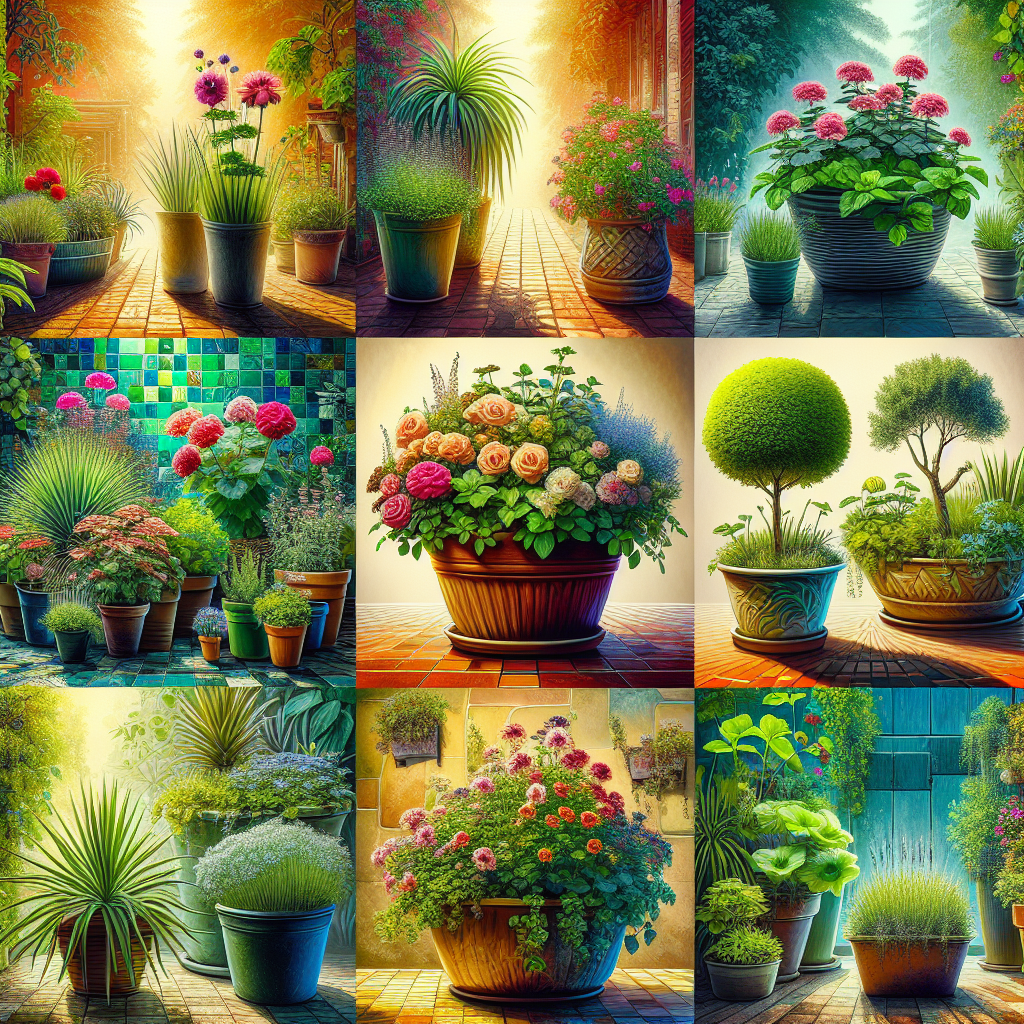# Creative Tips for Thriving Container Gardens in Any Environment
Container gardening has become a popular trend for both urban and rural gardeners, providing flexibility and creativity in small and large spaces alike. Whether you have a tiny balcony or an expansive patio, container gardening allows you to grow a variety of plants with ease. Here are some creative tips for thriving container gardens in any environment.
## 1. **Choosing the Right Containers**
The first step to successful container gardening is selecting the right containers. The material, size, and drainage capability of your containers will play a significant role in the health of your plants.
– **Material**: Containers come in various materials such as plastic, terracotta, ceramic, wood, and metal. Each material has its pros and cons. For instance, terracotta pots are porous and allow better air circulation but can dry out quickly. Plastic containers retain moisture well but might not provide as good insulation against temperature variations.
– **Size**: The size of the container should be appropriate for the plant you’re growing. Smaller plants do well in compact pots, whereas larger plants need more space for root development.
– **Drainage**: Ensure your containers have adequate drainage holes to prevent waterlogging, which can lead to root rot.
## 2. **Selecting the Right Soil**
Not all soil is created equal when it comes to container gardening. Garden soil is often too dense for containers and can restrict root growth.
– Use a high-quality potting mix designed specifically for containers.
– For additional benefits, consider adding perlite or vermiculite to improve aeration.
– Also incorporate organic matter such as compost or aged manure to enhance nutrient availability.
## 3. **Optimizing Watering Practices**
Watering is crucial but often challenging in container gardens because soil dries out faster compared to ground gardens.
– **Consistent Watering**: Establish a regular watering schedule based on your plant’s needs and environmental factors like temperature and humidity.
– **Self-Watering Containers**: Consider using self-watering containers which have built-in reservoirs that provide consistent moisture levels.
– **Mulching**: Applying a layer of mulch on top of the soil helps retain moisture by reducing evaporation.
## 4. **Plant Selection Based on Environment**
Choose plants suitable for your specific environment (sunny spots vs shady areas).
### For Sunny Spots:
– Sun-loving annuals like marigolds, petunias
– Herbs like basil, rosemary
– Drought-resistant succulents
### For Shady Areas:
– Shade-tolerant flowers like impatiens
– Ferns that thrive without direct sunlight
– Cooler weather vegetables like spinach
When selecting plants also consider their height & spread so they fit comfortably within their allocated space without overcrowding other plants.
## 5. **Creative Plant Arrangements**
Elevate aesthetics by mixing various types within one large container – combining tall focal points (grasses), medium fillers (geraniums), trailing spillers (sweet potato vine). This “thriller-filler-spiller” method adds depth & visual interest creating attractive displays whether viewed up close afar!
## 6 .**Proper Fertilization Techniques**
Containers rapidly lose nutrients due frequent watering – replenish regularly using balanced fertilizer either liquid/granular form following manufacturer instructions:
-Regular liquid feedings during active growth periods (spring/summer)
-Slow-release granules mixed into topsoil at planting time
Ensure correct balance between over/under feeding avoid nutrient toxicity deficiencies respectively!
##7 .**Combating Common Pests/Diseases**
Containers aren’t immune pest/disease issues:
-Regularly inspect foliage/stems undersides leaves detect early signs infestation treatment actively applied needed protect from widespread damage!
-Practice good sanitation methods removing dead debris prevent harboring pests fungi improving airflow around base promoting healthier overall growth cycle infinitely more rewarding harvest season ahead!
To mitigate risks try planting varieties known resistance specific diseases common within region ideal conditions produced ensuring optimal yields enjoyed end result patience dedication hard work invested pay dividends long-term success guaranteed satisfaction come fruition eventually ultimate testament perseverance passion enthusiasm bringing life kindred spirits nature!













